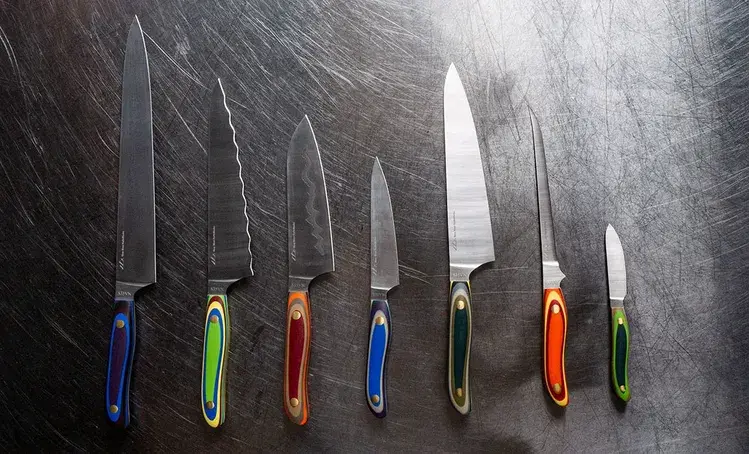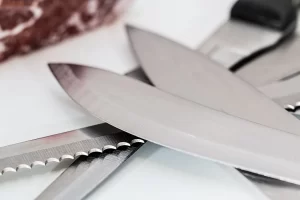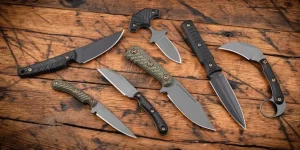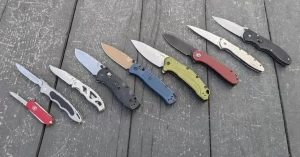Being sharper than any wood, knives are not mere utensils required for cutting. Knifeworks are a part of cultural heritage that have inspired the sense of gathering or hunting, sharpened by culinary artists, and uplifted by collectors and hobbyists in the course of several centuries. As knife collecting continues to grow in popularity, from exacting culinary knives to replicas inspired by characters from popular anime. It is important for anyone interested in the concept of bladework to consider the following.
If you are a sword collector, cosplayer, or even beginner smith who wants to take your passion up a notch, there are some fundamental skills you should acquire. These five basic knife works will add value to your collection, boost your performance and help you realize your appreciation for handmade knives.
The Art of the Blade: The skills needed to work a basic knife properly
In order to better appreciate the artistic side of knives, there is a need to understand basic concepts of their construction. A knife typically consists of the following parts:
Blade: The sharp part of the weapon, and it can be made of different kinds of steel or stainless steel, or an alloy.
Spine: The wider, more rounded part of the blade to provide rigidity and heavier weight at the business end of the sword for chopping or hacking.
Tang: The metallic part that goes into the handle (an influential aspect of the durability of a knife).
Heel: The dimensions of the volute which doubles as the handle made from wood, metal or synthetic material.
Tine: The sharp end of the blade fitted for puncturing.
Knives are crafted for a wide variety of purposes, meaning each type serves different roles:
Chef’s knives are an essential utensil for cutting food in the kitchen and are used to chop, dice, and slice meals.
Straight razors are highly accurate instruments which are embraced by Groom’s men and shaving fanatics.
Military survival knives are used in the tactical force.
Knowledge of these elements is important in a quest to recognize good pieces to add to the collection. The factors of balance, material, and workmanship are important determinants of the efficiency of a blade and its potential as a collector’s item.
Sharpening Skills: Methods in a Effort to Sustain the Competitive Advantage
A blunt knife is not only embarrassing to use but also extremely hazardous to an individual. Maintenance guarantees that a blade remains in a correct condition as it possesses a sharp cutting edge. Below are sharpening tips that will help to maintain the hygiene of your knives as you keep on sharpening them.

- Using a Sharpening Stone
As mentioned earlier sharpening stones, also referred to as whetstones are some of the oldest techniques used for honing a knife.
Steps:
If the stone used will be a water stone it should be wet while for an oil based stone it should be oiled.
When sharpening your knife you should angle the knife at about 20 degrees to the stone.
Hold the blade upright and lightly and then pull it through the stone in a sweeping, even stroke.
- Honing Rods
Even though honing rods don’t hone the edge they act as a tool to maintain the cutting ability of the blade in between carving sessions. The blade should remain aligned to the rod so that if you are right handed it should enter the rod from the operator’s right and exit at the operator’s left while using your blade, you should run it at an angle of around 20 degrees.
- Electric Sharpeners
They are commonly used electric sharpeners, which are fast and easy to use for those who don’t have time to sharpen with traditional methods. As long as it is suitable for the material of the knife and the type of edge, then you will not harm the knife.
Precision Cutting: Earnest and Volatile
For a cook, knives form part of cooking equipment, or for those who appreciate sharp objects as instruments of precision, the following information would be valuable in increasing your appreciation to get exact results.
Ten preventive measures to achieve clean, professional looking hair trims
Choose the Right Knife:
A chef’s knife is suitable for general chopping.
Use a paring knife if you are cutting something small and require a great deal of precision.
For bread or soft fruits then using a serrated knife is the best tool for the job.
Focus on Technique:
Ensure that they remain flexed towards the palm, that is the claw grip to safe-guard the fingers.
Don’t press too hard; trust the sharpness of the knife to do the cutting for you.
Practice Cutting Evenly:
Regardless if it is the preparation of vegetables or the preparation of fish. Uniformity reduces the cooking period and produces a neat outlook.
Forging Your Own Path: Introduction to Knife Making
Knife lovers swim with the sharks when they turn into the knife makers themselves. Blade making presents the possibility of crafting selected knives based on particular needs, wants or requirements.
Steps in Knife Making
Isolation: Select a knife model and draw a layout of the knife.
Choosing the materials: One should choose the right steel for the blade and robust materials for the handle.
Pounding the Anvil: Heat the steel, shape for the desired form and heat again to increase its durability.
Final Assembly: Install the handle and immobilise it with a couple of rivets or epoxy.
Sharpening and Polishing: Take the blade to the desired polished end to provide function.
Although the process of doing it needs understanding and proper tools and methods. A beginner can use local workshops or Internet tutorials. Collectors will find that making a knife can open a new appreciation of these awe inspiring tools.
Safety First: How To Effectively Handle And Store Your Collection
Knife collecting should be as safe as it is enjoyable. Apart from protecting people, handling and storage also ensure that the condition of your blades do not get compromised.
Safe Handling Tips
It is safer this way because it reduces dangers to the minimum when cutting away from your body. Wear protective gloves while cleaning, honing or simply using the blade. While Reduce access of replica or decorative knives to children by placing these products at places where children won’t get a hold of them.
Proper Storage Tips
Some knives are used for cutting bread and other foodstuffs. They should be kept in a leather sheath or in a blade guard or on a magnetic strip to avoid blunting.
When you consider safety first, While you preserve the value of your collection for many years at the same time saving you and others from harm.
The Knife- An Object to Embrace
It is proving indeed very beneficial to embark on knife collecting as this involves acknowledging history, art and durability. So, when it comes to knifeworks, learning each and every basic knifeworks principles. Like blade structure, honing, and carry can broaden up your learning and give you a new sense.
If your selection encompasses samurai sword replicas, antique kitchen knives, or handmade, understanding this timeless art form ties you to a global fellowship.
Which knife type do you like the most, or perhaps which method of preparation have you been using mostly? Feel free to share more stories or tips in the comments. They will allow us to preserve the future of the bladed art in the world.
To Order Knives & swords Please Visit Our Website
Or




